Starlog
Starlog Photo Guidebooks
Starlog's first spin-off titles were the photo guidebooks. They were soft-cover one-off titles, full of photos. The magazine-style layout made these books stand-out from other science fiction movie books. The text was a catalogue of film and television titles with a short description for each. They weren't analytical, or even particularly comprehensive. The chief attraction were the photos and the attractive layout. Each title was one of two formats: thinner 36 page titles with colour throughout, and thicker 100 page titles, mostly black and white with colour photo sections.
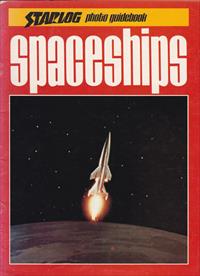
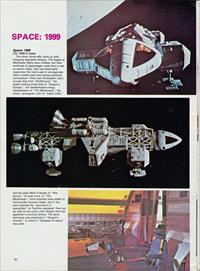
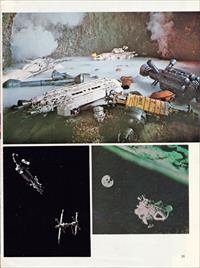
Spaceships was the first title, in 1977. It was written by Tom Rogers, and just 36 pages. The cover, from When Worlds Collide, was a little dull, and there was just one pre-production painting for Star Wars (not yet released), but it established a winning formula, and a new larger version was written in 1980.
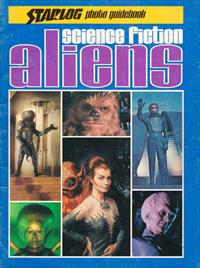

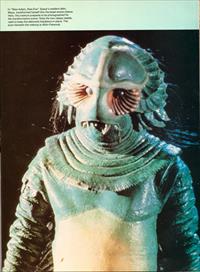

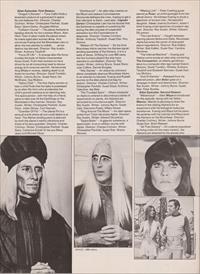
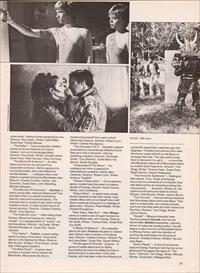
Science Fiction Aliens followed quickly, also in 1977. Written by Ed Naha, it was now 100 pages, but with the colour photos kept in two sections. The Space: 1999 entry uses ITC publicity, with some wrong titles ("The Chrysalis A-B-C") and bad credits ("Dorzak" written by Pip and Jane Baker, instead of Christopher Penfold).
When Gerry and Sylvia Anderson first conceived Space:1999 they thought of it in terms of a British science-fiction show designed to appeal to American audiences. After every major American network turned it down, the plucky Andersons and ITC syndicated the series around the country.
Space:1999 lasted two controversial seasons. By mid-season, however, the science-fiction community was totally polarized in terms of the show. Space's fans were devout, touting the show as a great advancement for SF on TV (which it was). Its detractors claimed that the characters were wooden, the scientific aspects of the show were cockeyed and the scripts were sometimes inept (these charges also had basis in fact).
Despite the turmoil, the show triumphed in the ratings. But the flaws of the show led to a revamped second season, a revamping that some fans insist did the show in. Fred Freiberger replaced Sylvia Anderson as producer second time around. Freiberger was the man responsible for Star Trek's last season (Star Trek fans see a definite cause and effect relationship there) and was welcomed aboard because of his connection with that show.
Space's last season saw the addition of such characters as metamorph Maya (played by Catherine Schell) from the planet Psychon, and hero Tony Anholt, as well as the deletion of such roles as Bergman. Maya, who could transform herself into almost anything at will, was an attempt to make the interplay aboard Moonbase Alpha a bit more stimulating. Unfortunately, many saw her as being a token alien. Amidst a sea of finger-pointing, the show sank into oblivion at the end of its second season.
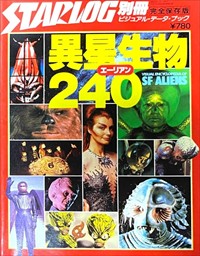
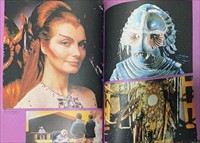
The Aliens photo guidebook was reprinted in Japan as Visual Encyclopedia of SF Aliens in 1978. It uses the same photos and text, with a new layout. It was 106 pages.
Space Art by Ron Miller was devoted to astronomical art, rather than film or TV
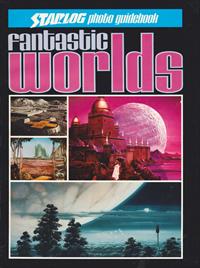

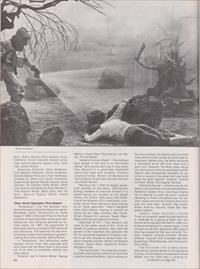

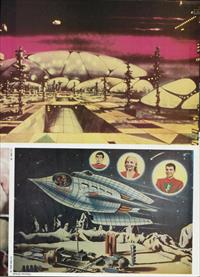
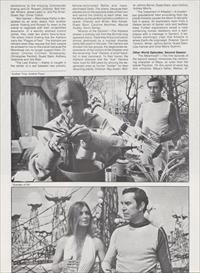

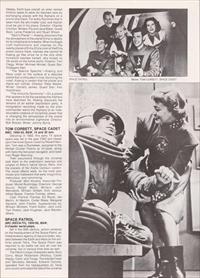
Fantastic Worlds was written by Scot Holton and Robert Skotak in 1978, and was again 100 pages with two colour sections.
In spite of the continuing controversy that surrounded Space: 1999 throughout its two seasons on TV, the show remained the most visually spectacular series ever aired on a weekly basis. Content-wise, the people in charge never quite decided whether to push for hardcore science-fiction, fantasy or metaphysics. While any astronomer would wince, the depiction of all the various planetary landscapes was usually well done.
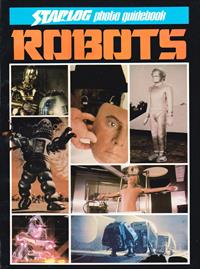
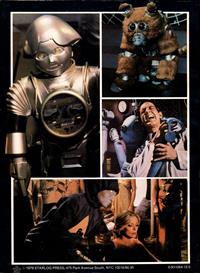
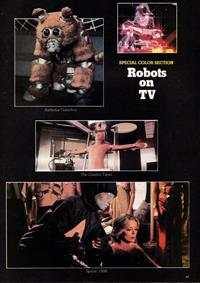

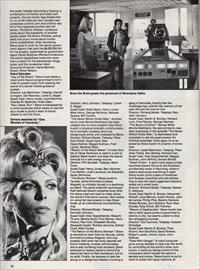
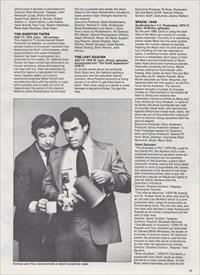
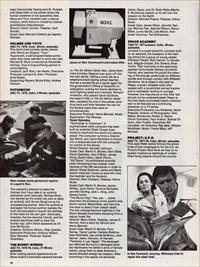
Robots by Robert M Hefley arrived in 1979, again at 100 pages.
By the year 1999, Earth is using the dark side of the Moon as a dump for nuclear waste materials. The entry of a wandering planet called Meta into the solar system causes the nuclear wastes to explode, blasting the Moon from its orbit and sending it hurtling off into the vastness of space. It evidently hurtles rather quickly, since in a remarkably short span of time the Moon and the inhabitants of Moonbase Alpha encounter numerous planets filled with unfriendly life forms. Martin Landau starred as Commander John Koenig, Alan Carter as Nick Tate and Barbara Bain as Dr. Helena Russell. Barry Morse was seen as Victor Bergman, but departed after the first season, as did Producer Sylvia Anderson. The second season brought a number of changes, notably an improvement in the scripts (at least in clarity) and several new characters: Catherine Schell as Maya and Tony Anholt as Tony Verdeshi. In spite of its faults, the show functioned very well on a purely visual level, with spectacular special effects and model work. Sadly, the show ran out of time while still making efforts to improve, being cancelled after the second season.

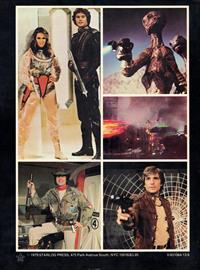
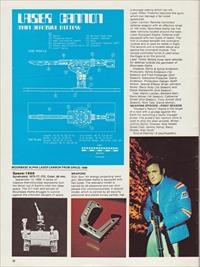

Science Fiction Weapons Vol. 1 by David Hirsch and Barbara Krasnoff was also published in 1979, with a slim 36 pages. There was no further volumes. There were five blueprints by Anthony Fredrickson and one, the Moonbase Alpha laser cannon, by Geoffrey Mandel (reproduced from the Moonbase Alpha Technical Notebook). Dorzak is miscredited again.
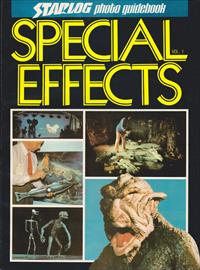
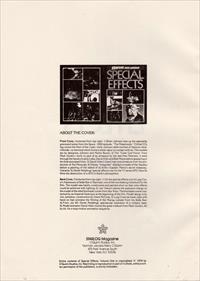
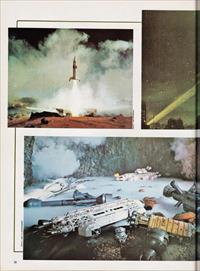
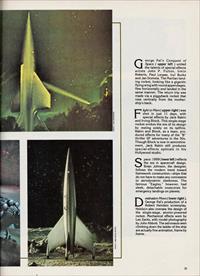
Special Effects Volume 1 by David Hutchison was a third 1979 title, and the only one that spawned 4 further volumes. This 100 page title broke away from the catalogue formula, in favour of short descriptions of the effects techniques shown in the photos. Later volumes, in 1980, 1981 and 1984, had longer articles and reprinted profiles from Starlog about the effects technicians.
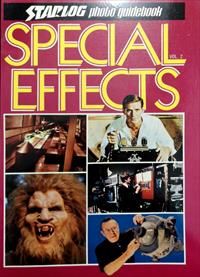
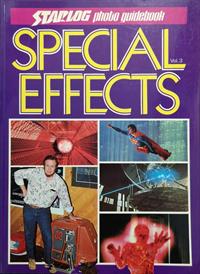

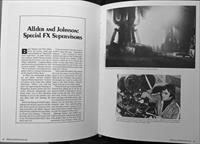
Special Effects Volume 3 (1981) contains an article about Brian Johnson and Nick Allder working on Alien, abridged from an article in Starlog 27 (October 1979), including one ITC photo of Johnson working on Space: 1999.

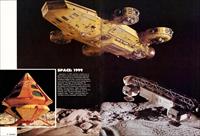
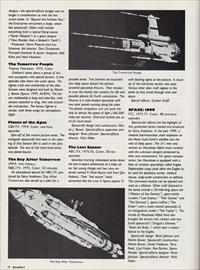
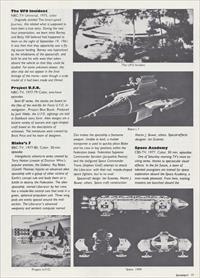
Spaceships, Enlarged Edition was written by David Hirsch and Howard Zimmerman in 1980, and was the last of the catalogue formula. It was 100 pages, with three colour sections.
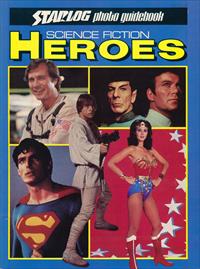
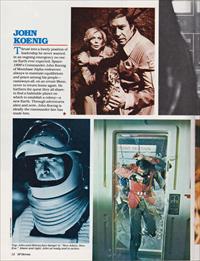
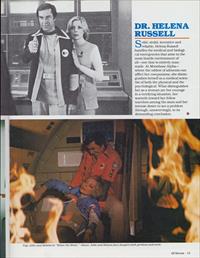
Science Fiction Heroes and Science Fiction Villains, both by David Houston, appeared in 1980; each was just 36 pages with short character profiles.
John Koenig: Thrust into a lonely position of leadership he never wanted, in an ongoing emergency no one on Earth ever expected, Space: 1999's Commander John Koenig of Moonbase Alpha endeavours always to maintain equilibrium and peace among his people- castaways all, on an errant Moon, never to return home again. He furthers the quest they all share: to find a habitable planet on which to establish a colony - a new Earth. Through adventures alien and eerie, John Koenig is ideally the commander fate has made him.
Dr. Helena Russell: Solid, stolid. inventive and reliable, Helena Russell handles the medical and biological emergencies that arise in the most hostile environment of all-one that is entirely man-made. At Moonbase Alpha- where the oddest of ailments can afflict her companions, she distinguishes herself as a medical scientist of both the physical and the psychological. What distinguishes her as a woman are her courage in a terrifying situation, her warmth toward her fellow travellers among the stars and her intense desire to see a problem through, unswervingly, to its demanding conclusion.

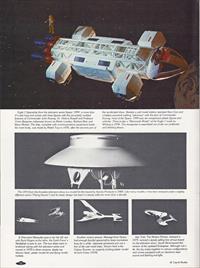
Science Fiction Toys and Models Volume 1 by Stephen J Sansweet appeared in 1980, and was another slim 36 page title. Much of the focus was on toy robots, saucers and cars, rather than movie tie-ins. There were no other volumes.
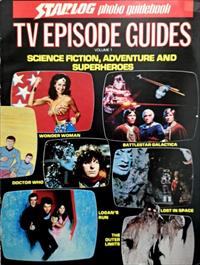
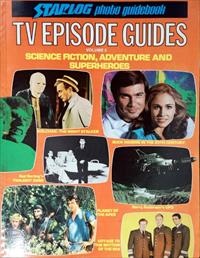
TV Episode Guides started with volume 1 in 1981 (including Thunderbirds), and volume 2 in 1982 (including UFO), both edited by David Hirsch and others.
The final title, in 1982, was Fantastic 3-D by David Hutchison, covering 3D film and comics, alongside volume 2 of TV Episode Guides. Finally, in 1984, volume 4 of Special Effects arrived, the last title in the series. That edition listed two other titles, 50 Years of SF Demons and Devils and SF Costumes & Uniforms, neither of which seem to have been published.